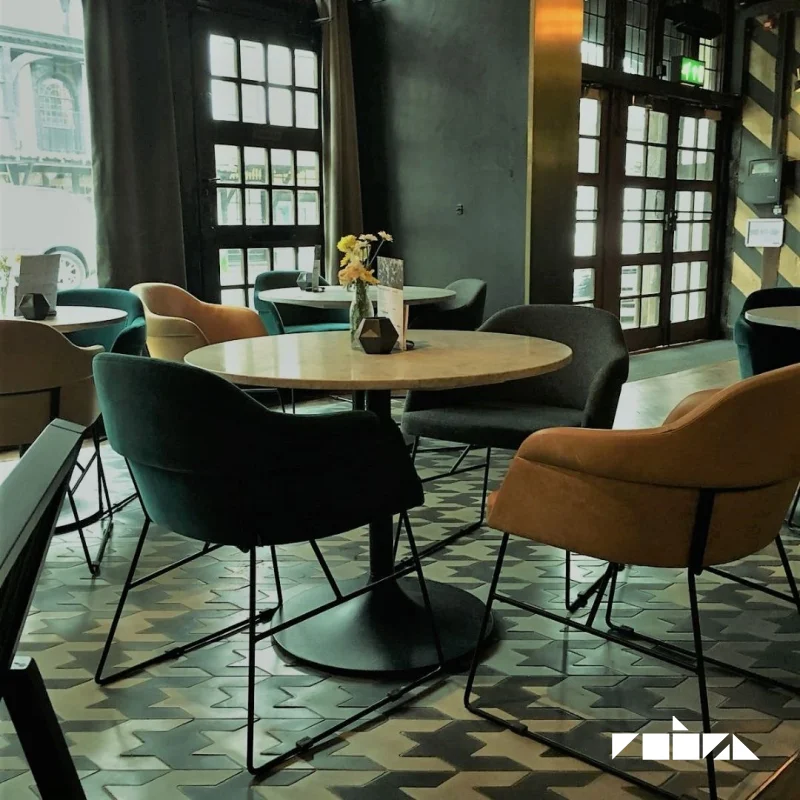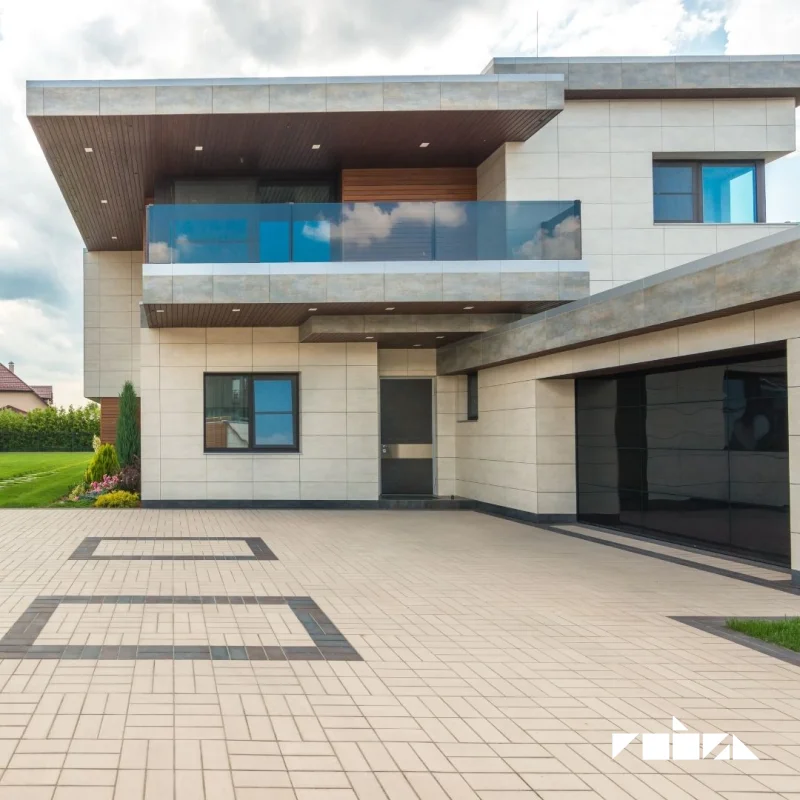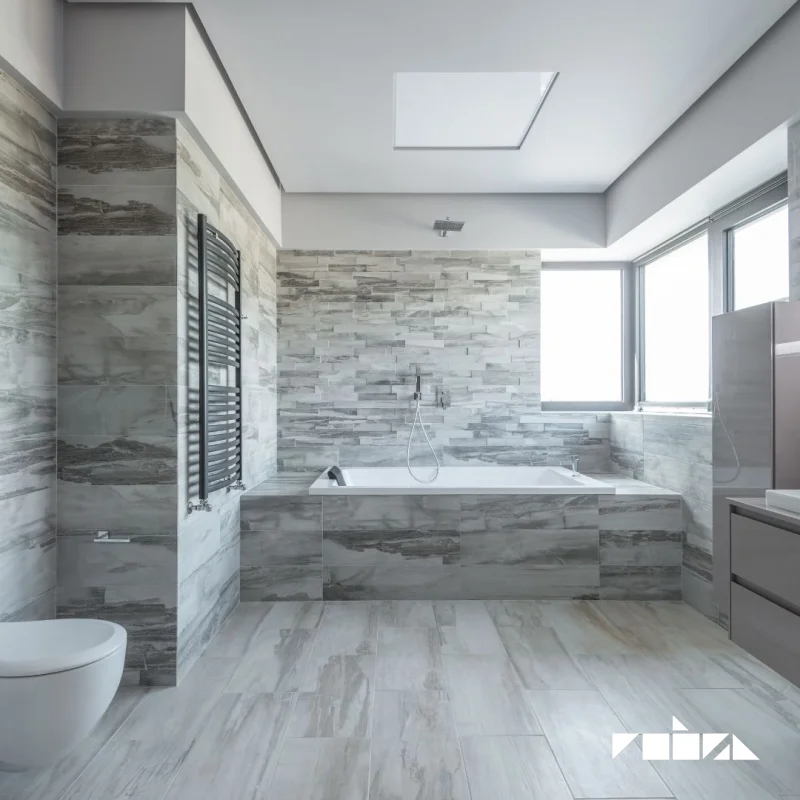Tiles are versatile coverings made from materials like ceramic, porcelain, and natural stone. They're used in both residential and commercial settings due to their durability, aesthetic appeal, and ease of maintenance. From classic white subway tiles to bold mosaic designs, the range of styles is endless.
Tiles are a foundational element in modern architecture and interior design. Known for their durability, versatility, and aesthetic value, tiles are widely used in residential, commercial, and outdoor spaces. Whether you're aiming for a classic, rustic, or contemporary style, tiles offer a solution that balances beauty with function.

Tiles are flat, thin materials typically made from ceramic, porcelain, natural stone, or glass. They are commonly used for covering floors, walls, and other surfaces. The production process involves shaping raw materials and firing them at high temperatures to achieve strength and water resistance. Depending on the material and finish, tiles can be glossy, matte, textured, or even patterned.
Tiles are flat, thin slabs commonly used to cover floors, walls, and even ceilings. They’re made from various materials such as ceramic, porcelain, cement, natural stone, or glass. After being shaped and dried, they are fired at high temperatures to ensure durability, water resistance, and long-lasting color.
Tiles are essential not only for functional use like protecting surfaces from moisture or wear—but also for contributing to interior design aesthetics. Today’s tiles come in countless finishes: glossy, matte, textured, patterned, and even handcrafted styles that add character and uniqueness to a space.
Let’s take a closer look at the most popular types of tiles available:
Porcelain tiles are made from refined clay and fired at higher temperatures than ceramic, making them denser, harder, and more water-resistant. These qualities make porcelain ideal for:
With various finishes mimicking wood, stone, or concrete, porcelain tiles combine function and style for both modern and classic interiors.
Ceramic tiles are lighter and slightly more porous than porcelain, making them easier to cut and install. They are best suited for:
Affordable and available in endless colors and styles, ceramic tiles are perfect for DIY projects and budget-friendly renovations.
Victorian tiles are iconic patterned floor tiles that reflect traditional British aesthetics. Typically made from durable porcelain or cement, these tiles are known for:
These tiles bring a timeless, heritage charm to any space and are increasingly used in both classic and modern interiors.
Terrazzo tiles are a stylish blend of marble, quartz, granite, and glass chips set into a cement or resin base. They're celebrated for their:
Popular in both flooring and wall applications, La Terrazzo tiles are bold, trendy, and eco-conscious.
The history of terrazzo dates back to ancient times, with its origins in Italy and even earlier evidence in other ancient cultures.
Early Beginnings: Terrazzo’s roots can be traced back to the 15th century in Venice, Italy. Venetian workers, seeking to repurpose leftover marble and stone chips, began embedding these into a mortar base, which they would then grind and polish to reveal a beautiful speckled finish. This was a practical and aesthetic solution for flooring, and it quickly became popular for both residential and public spaces.
However, the use of mortar-based materials like terrazzo dates back even further. At Göbekli Tepe, an ancient archaeological site in Turkiye, evidence shows that lime-plaster floors (known as terrazzo floors) were used in some of the special buildings. These early forms of terrazzo highlight the long-standing use of mortar-based materials such as plaster floors, wall renders, and concrete in construction throughout ancient cultures. These materials have played an essential role in construction for thousands of years and are found in cultures all over the world.
Evolution: During the mid-19th century, terrazzo made its way to the United States through Italian immigrants. It gained popularity in cities like New York and Chicago and became a staple in commercial and public spaces, such as schools, government buildings, and airports. Its durability, ease of maintenance, and aesthetic flexibility made it a top choice for high-traffic areas.
Conclusion: Terrazzo's history spans thousands of years, from the ancient lime plaster floors of Göbekli Tepe to its modern incarnation in today's interiors. Its enduring appeal is a testament to the durability and beauty of mortar-based materials, which have been essential to construction across many cultures and time periods. With its sustainable, customizable nature, terrazzo continues to be a timeless choice in design.
Also known as encaustic tiles, cement tiles are handcrafted using colored cement pressed into molds. They’re ideal for:
Their matte finish and rich pigment patterns make them favorites in boho, Moroccan, and Mediterranean design styles.
Le Zellige are traditional Moroccan glazed clay tiles, known for their:
Often used for walls, backsplashes, and small accent areas, Zellige tiles bring a handcrafted, artisanal beauty that’s impossible to replicate with mass production.
Each of these tile types serves unique design goals and functional needs, giving homeowners, architects and designers the ability to personalise spaces with textures, finishes and patterns to suit any indoor or outdoor environment.
Offering a wide range of tiles including Porcelain, Ceramic, Victorian Floor Tiles, La Terrazzo, Cement Tiles and Le Zellige, Robel empowers customers to find the perfect match for their vision while ensuring quality, durability and timeless design.

It’s not just the style, colour, or surface finish that will affect the final look of your space. The size of the tile is also crucial. Tile size can impact the perception of space, the flow of the room, the authenticity of a period look, and even the overall mood or atmosphere you wish to create. This question often arises because choosing the right tile size depends on several factors, such as the room size, layout, and desired style.
People often wonder whether smaller or larger tiles work better in specific spaces like bathrooms, kitchens, or living areas. There’s also the consideration of whether larger tiles make a room feel more expansive or if smaller tiles are better suited for intricate designs in smaller spaces.
Here’s a general guideline to help you choose the right tile size for your space:
Smaller tiles are ideal because they allow for intricate patterns and designs, giving the opportunity to make a feature of the space. They also add texture and detail to smaller areas. However, larger tiles can also work in small spaces if you want a more seamless, modern, and less cluttered look. Larger tiles can create the optical illusion of more space by reducing grout lines, making the room feel bigger.
Larger tiles are perfect for big spaces, as they create a clean, expansive look and reduce the number of grout lines, making the room feel more open and airy. Rectangular tiles can be used to create a contemporary, elegant vibe. They’re also great for various patterns (like herringbone or offset), adding visual interest to the room.
For walls, smaller tiles, mosaic tiles, or classic subway tiles are often used for backsplashes or accent walls. These options allow for more design flexibility and help create focal points. For floors, larger tiles are typically preferred because they result in fewer grout lines, creating a cleaner, more uniform surface.
Ultimately, choosing the right tile size is about balancing the space’s proportions, the look you’re going for, and your personal preferences. It’s always helpful to test tile samples in your space before committing to a final choice.
Choosing the right tiles depends heavily on where they will be installed. Each space in your home or business has unique needs—bathrooms require slip-resistant surfaces, kitchens demand stain-proof materials, and outdoor areas need weather-resistant durability.
Functionality meets elegance when it comes to choosing the right bathroom tiles. Bathrooms are high humidity areas, which means that water resistance, hygiene and slip protection are non-negotiable. That's why most homeowners opt for tiles that are both practical and visually appealing.
The Best Options for Bathroom Tiles:
Robel offers extensive collections of bathroom-specific designs, including textured surfaces and antibacterial coatings.
Kitchen tiles are the ultimate combination of style and practicality. They must endure spills, splashes, heat, and grease while complementing the overall aesthetic of the space. From floors to backsplashes, choosing the right tile ensures long-lasting performance and easy cleaning.
Recommended Tiles for Kitchens:
Brands like tile giant, al murad tiles, and tile mountain provide a vast selection of tiles with various finishes including matte, gloss, and satin. Their collections cater to all styles—from rustic farmhouse to modern minimalist.
Extra Tips:
Kitchen renovations are incomplete without stylish and durable tiles that elevate the heart of your home.
Living rooms are being reimagined with tile flooring more than ever. Thanks to advancements in tile design, homeowners are moving beyond carpets and hardwood to embrace tiles for their style, ease of maintenance, and adaptability.
Best Tile Types for Living Rooms:
Design Advice:
Choosing the right tiles can dramatically improve your living room’s ambiance, making it more inviting and easy to clean at the same time.
Outdoor spaces such as patios, balconies and garden paths benefit greatly from the right tiles. These areas face changing weather conditions, foot traffic and dirt, so the tiles used need to be robust and slip-resistant.
Ideal Outdoor Tiles:
As Robel, we offer outdoor-specific collections with non-slip textures and UV resistance.
Outdoor Tiling Tips:
Outdoor tiles are a wise investment for anyone looking to extend their living space while maintaining style and safety throughout the year.
One of the most exciting parts of choosing tiles is selecting the perfect colour and pattern. In the UK, where interior trends lean toward a mix of modern minimalism and timeless charm, tile designs play a central role in defining the character of a room. From soft neutrals to bold motifs, your choice of tile colour and pattern can completely transform the feel of a space—be it in a Victorian home or a new-build flat.
Solid colour tiles are a favourite in minimalist, Scandi-inspired, and modern interiors throughout the UK. Shades like white, soft grey, charcoal, and taupe dominate bathroom walls and kitchen splashbacks due to their clean look and versatile styling.
Solid tiles are especially popular in areas like London, Manchester, and Birmingham, where space is often a premium and clean design is valued. Use large white porcelain tiles on bathroom walls or matte grey ceramic tiles for a sleek, industrial kitchen vibe.
Patterned tiles have seen a huge revival in the UK, especially in Victorian terrace renovations, boutique hotels, and trendy cafes. Whether it's for a statement hallway floor or a kitchen feature wall, patterned tiles bring life and story to any room.
Popular Styles in the UK:
British homeowners love using tile paint or patterned vinyl alternatives to mimic these styles affordably—but nothing beats the durability and authenticity of real patterned tiles.
Natural look tiles are ideal for those who love the aesthetics of wood, stone, or concrete, but want the durability and low maintenance of porcelain. In the UK, where real wood flooring can suffer due to moisture and temperature swings, wood-effect tiles offer a practical and visually stunning alternative.
These tiles are a top pick in open-plan living spaces and are widely used in kitchen-diner extensions across the UK.
In selecting tiles, it is imperative to consider factors beyond mere functionality; the colour and pattern of the tiles can significantly influence the ambience, energy and narrative of a space. The selection of tiles can be informed by a desire for subtle elegance or bold design, with the appropriate choice enhancing the aesthetic quality of the home, reflecting the personality of the occupier, and even adding value to the property.

Maintaining your tiles properly not only enhances their beauty but also extends their lifespan. Whether you’ve invested in ceramic, porcelain, or natural stone tiles, routine care ensures they stay clean, shiny, and functional for years to come. Especially in homes across the UK, where moisture and temperature changes can affect surface materials, having a reliable tile maintenance routine is essential.
Daily cleaning is the simplest way to keep your tiles in great condition. Most tiles, especially porcelain and ceramic, are incredibly low maintenance, but that doesn’t mean they should be neglected. Using a mild, pH-neutral detergent mixed with warm water is ideal for everyday cleaning. A soft microfiber mop or cloth will remove dust, dirt, and spills without damaging the surface. Avoid using abrasive brushes or harsh chemical cleaners, as these can dull the tile’s finish over time or scratch glazed surfaces.
Regular sweeping or vacuuming also helps prevent grit from accumulating, which can lead to micro-scratches, especially on high-gloss or polished tiles. Keeping up with daily cleaning is particularly important in high-traffic areas like kitchens, hallways, and bathrooms where floor tiles are more prone to visible dirt and grime.
Stain Removal Despite the fact that tiles are often manufactured with a high resistance to staining, there are occasions when even the most resilient tiles can be affected by persistent discolouration, particularly in areas such as kitchens or outdoor patios. For particularly tenacious stains, such as those caused by red wine, coffee, or grease, a homemade cleaning paste composed of baking soda and water has been known to produce effective results.
This paste should be applied to the affected area, left for 10–15 minutes, and then gently scrubbed with a soft sponge or cloth. In the case of bathroom tiles affected by soap scum or limescale, a diluted vinegar solution can be employed; however, it is important to exercise caution with natural stone tiles, as acidic solutions may cause damage. It is imperative to select a commercial stain remover that is specifically formulated for use on tiles and has undergone rigorous testing on a small, inconspicuous area prior to application.
The utilisation of a non-scratch sponge, in conjunction with gentle circular motions, has been found to be an effective method of removing even persistent stains without compromising the integrity of the tile. In the context of UK homes that utilise tile paint or decorative tile panels, it is imperative to ascertain the compatibility of cleaning products to prevent delamination or discolouration.
Maintenance of grout lines tiles themselves are relatively straightforward to maintain; however, grout lines often require special attention. Over time, grout can absorb moisture, develop mould, or become discoloured due to spills and dirt build-up. A simple solution of white vinegar and water can help restore grout brightness. The method entails the application of a solution comprising white vinegar and water to the affected area, followed by a period of repose to allow the solution to take effect.
Thereafter, a soft-bristled brush or an old toothbrush is utilised to gently scrub the surface. For more extensive cleaning or removal of coloured stains, oxygen bleach powders dissolved in warm water provide a more intensive yet gentle clean. In certain instances, particularly in older residences or rental properties across the UK, grout may require resealing on a biannual basis to maintain its water resistance and prevent mildew.
In instances where grout lines exhibit irreversible discolouration, the utilisation of a grout pen constitutes a rapid and cost-effective solution, effectively revitalising the aesthetic of tilework with immediate effect.
The right address for tiles in London is Robel. Please contact us immediately.